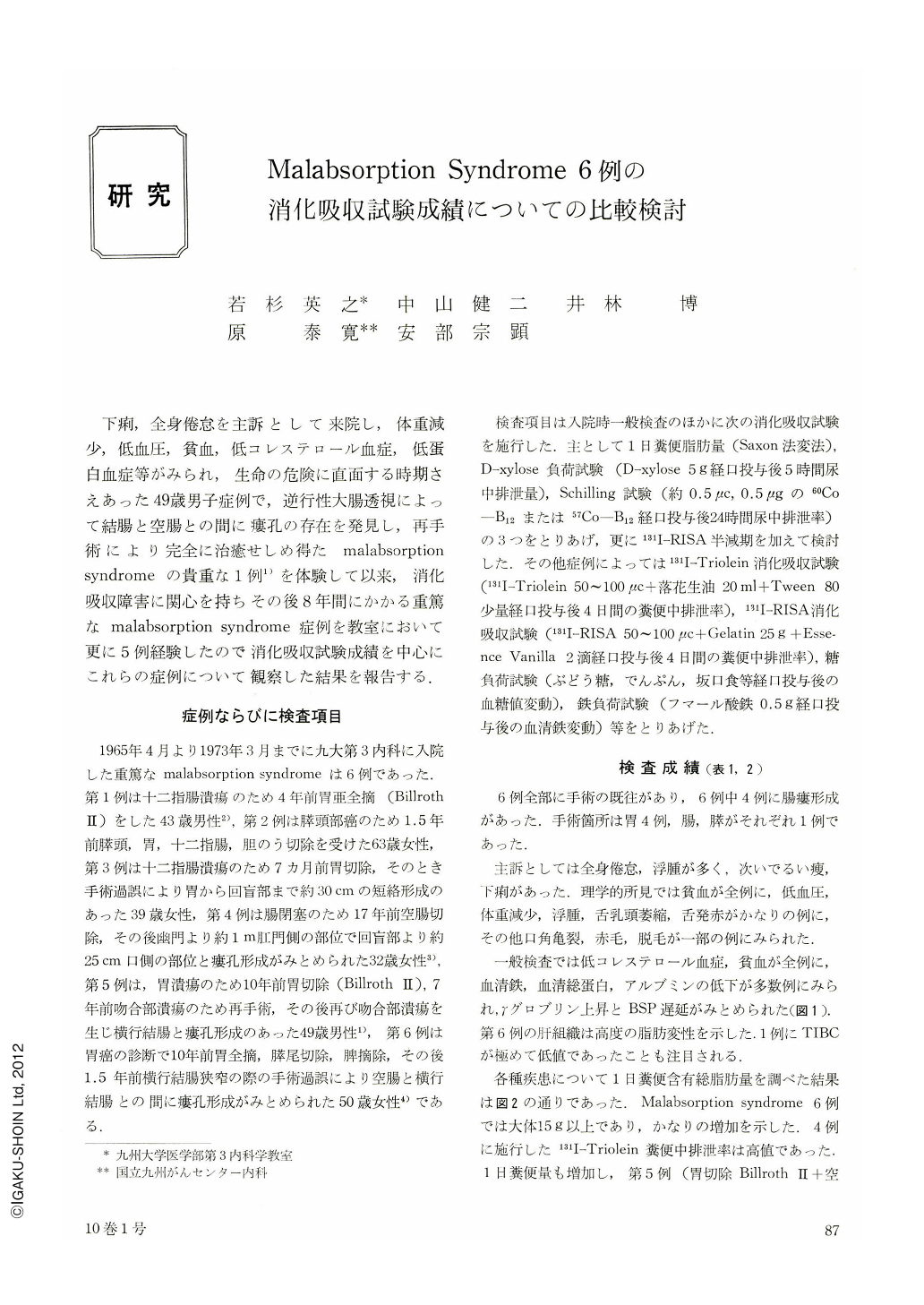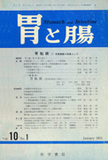Japanese
English
- 有料閲覧
- Abstract 文献概要
- 1ページ目 Look Inside
下痢,全身倦怠を主訴として来院し,体重減少,低血圧,貧血,低コレステロール血症,低蛋白血症等がみられ,生命の危険に直面する時期さえあった49歳男子症例で,逆行性大腸透視によって結腸と空腸との間に瘻孔の存在を発見し,再手術により完全に治癒せしめ得たmalabsorption syndromeの貴重な1例を体験して以来,消化吸収障害に関心を持ちその後8年間にかかる重篤なmalabsorption syndrome症例を教室において更に5例経験したので消化吸収試験成績を中心にこれらの症例について観察した結果を報告する.
In the last eight years (1965~1973), our clinic experienced six patients with severe malabsorption managed by the surgical interventions as follows: (1) subtotal gastric resection (Billroth Ⅱ ), (2) partial pancreatic, gastric, duodenal and cholecystic resection, (3) gastroileal fistula after partial gastric resection (Billroth Ⅱ), (4) jejunoileal fistula after jejunal resection, (5) jejunocolic fistula after partial gastric resection (Billroth Ⅱ ), (6) total gastric resection and jejunocolonic fistula. All of these patients had past histories of surgical treatment of bowels and showed blind loops. Intestinal fistula was found in four cases. It was difficult for us to recognize the fistula by fluoroscopic examination. Three cases, (3), (5) and (6), of fistula formation recovered almost completely by reoperation. The other cases, (4) and the one in which the fistula was not recognized (1), improved each by medium-chain triglycerides and by digestive enzymes orally administered. The case (2) died of the metastasis of carcinoma of the pancreas.
The result of intestinal absorption tests of each case showed severe fat malabsorption: fecal fat output (by Saxon's method) was approximately in excess of 15 g per day. D-xylose tolerance test was normal in (1), on the borderline in (2) and low in (4) and (6) cases. Schilling test was abnormal in (1) and (4), markedly low in (3), (5) and (6) cases. Measurement of D-xylose tolerance test and Schilling test, in addition to fat absorption test (fecal fat output), was considered to further elucidate the state of intestinal malabsorption, because D-xylose is absorbed in the proximal, vitamin B12 is absorbed in the distal, small intestine and the binding of the vitamin with intrinsic factor in the stomach is needed for its absorption. The half disappearance time (T1/2) of 131I-RISA in the cases, (1) and (6), was prolonged and kwashiorkor's signs such as sparse and red hair were recognized. When there is a hypoproteinemia, further measurement of the T1/2 of the RISA is considered to elucidate more clearly the pathophysiology of malabsorption, because the T1/2 is shortened in protein losing gastroenteropathy and prolonged in protein malabsorption.

Copyright © 1975, Igaku-Shoin Ltd. All rights reserved.


